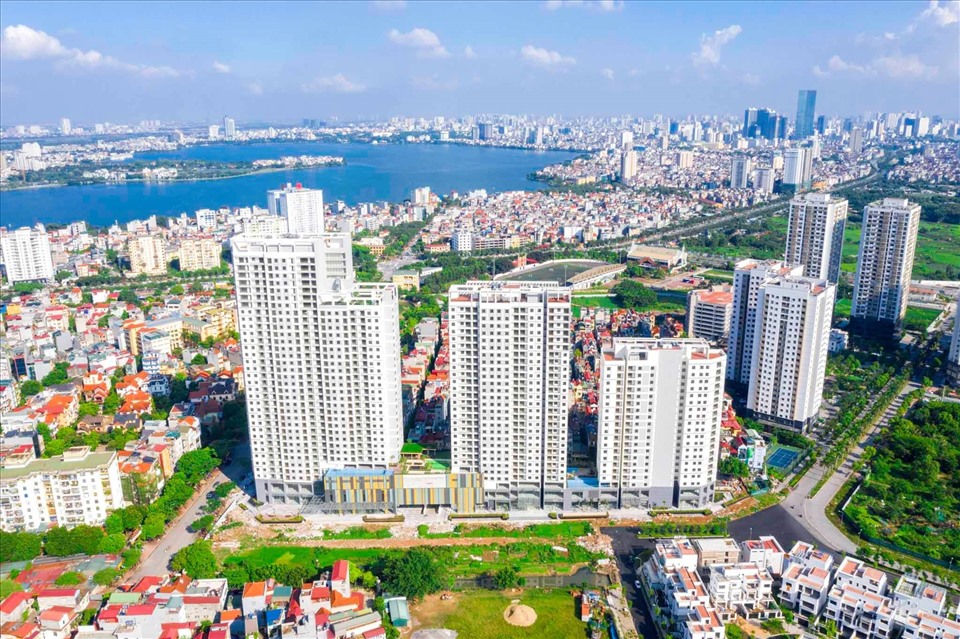Real estate credit will grow better
With the approval of the amended Housing Law, the amended Real Estate Business Law, and the Amended Land Law, as well as radical measures from the Government and Ministries, the Vietnam real estate market is predicted to rebound by 2024, with real estate credit also rising.

Vietnam real estate market is expected to rebound in 2024
>> Perfecting policies for industrial park development
Market recovery will continue
So far, the real estate market has stabilized as a result of the government's dramatic answers to its problems. The amended Housing and Real Estate Business and Land Laws are projected to significantly impact the Vietnamese real estate sector.
Dr. Nguyen Minh Phong, an economist, also stated that, despite numerous crossing possibilities and problems, the Vietnam real estate market would survive the most challenging phase, with positive rather than negative movements in both total supply and total demand.
Meanwhile, Ms. Pham Thi Mien, Deputy Head of the Vietnam Real Estate Brokers Association's (VARS) Market Research and Investment Promotion Consulting Department, stated that Vietnam's real estate market would shift in response to global economic conditions and macroeconomic activity.
"Although it is unlikely that the Vietnam real estate market would provide outstanding results in 2024, it serves as the foundation for the future cycle of development in the Vietnamese real estate market. "The housing segment, particularly social housing and commercial housing, will play a pivotal role, driving the whole market by mid-2024," she stated.
New expectations
The State Bank of Vietnam (SBV) released Circular 22/2023/TT-NHNN, modifying Circular 41/2016/TT-NHNN, which governs capital adequacy ratios for banks and foreign bank branches. As a result, the SBV maintained the same credit risk coefficient of 200% for real estate business initiatives.
>> More "push" needed for resort real estate
Furthermore, banks' short-term capital ratios for medium and long-term loans would be reduced to 30% beginning October 1, 2023. This makes it much more difficult for credit to flow into real estate, as real estate loans are sometimes quite long term, but banking capital is mostly short-term.
This shows that the SBV remains committed to closely restricting the flow of credit into the property market due to risk concerns. It is also general knowledge that the NPL percentage in the real estate sector tends to grow quickly. According to SBV figures, the bad debt percentage for real estate loans increased to 2.89% in September 2023 from 1.72% at the end of 2022.
However, according to financial experts, real estate loans will be stronger when the property market recovers, improving corporate liquidity and reducing bad real estate debt.
Indeed, despite the fact that the SBV does not support it, real estate lending has historically grown rapidly. According to SBV figures, real estate credit climbed by 6.75% in 2023, with consumer loans falling by 0.7% and commercial loans rising by 22%.
Furthermore, this year's credit room, which has been increased to 15% and allotted by the SBV in early 2024, will undoubtedly contribute to stronger credit growth, particularly real estate credit. Furthermore, MBS experts believe that real estate companies might lower product pricing in order to reach more consumers rather than prioritizing profits to produce cash flows. This helps banks increase their loans to the real estate business.
According to analysts, bank loans will flow quickly into industrial and social housing real estate projects since the SBV will lower credit risk-weighted (CRW) indicators for loans to social housing and industrial park projects in order to support the growth of real estate segments.
As per Circular No. 22/2023/TT-NHNN, the CRW for loans to acquire social housing and residences under the government's assistance programmes and initiatives would be lowered by half, to a maximum of 50%. Furthermore, the new circular reduces the CRW for loans to fund industrial park developments from 200 to 160 percent.








